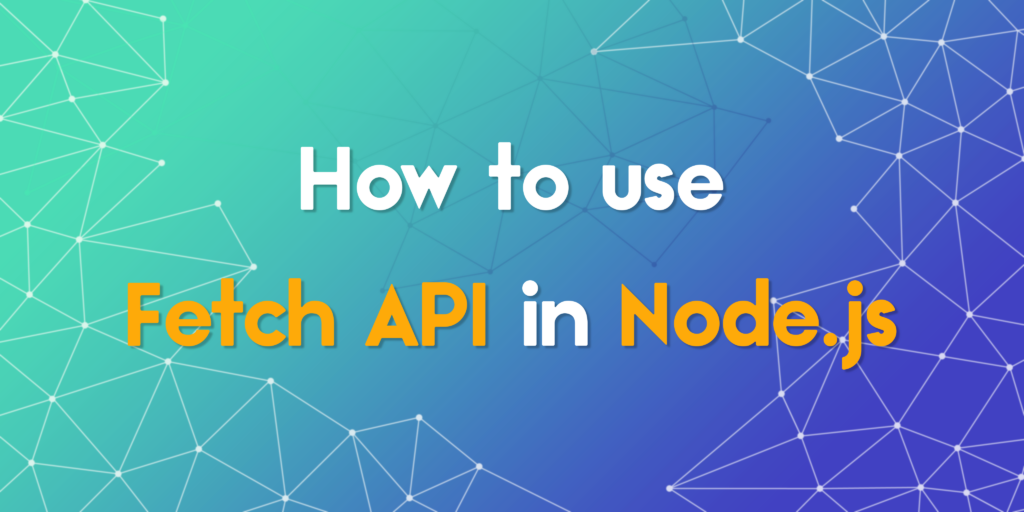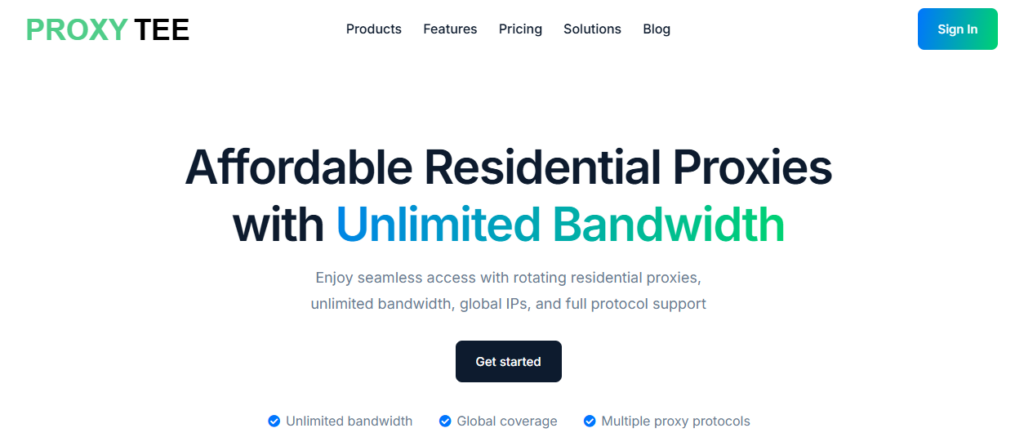Essential Guide to Learning Fetch API in Node.js

Understanding how to interact with external APIs is a fundamental skill in modern development. Whether you are building a data-driven dashboard, automating tasks, or integrating third-party services, knowing how to fetch data in Node.js is key. In this article, we explore the practical aspects of learning Fetch API in Node.js. You will discover useful techniques, real-world use cases, and tips for efficiently pulling data using this powerful and familiar web API approach. If you are working with proxies for scraping or market intelligence, you will also learn how this method fits in seamlessly.
Why Fetch API Matters in Node.js Development
Originally a browser-based API, Fetch has become a popular choice in server-side environments thanks to the rise of libraries like node-fetch and the built-in support in newer Node.js versions. Fetch offers a simple yet powerful interface for making HTTP requests, helping developers avoid verbose boilerplate code. This is especially valuable when working with proxy networks like ProxyTee to gather data from websites that restrict scraping or limit access.
For tasks like scraping eCommerce listings, validating SEO metrics, or syncing third-party databases, Fetch API streamlines the process. When combined with an unlimited residential proxy, it becomes a robust solution that can bypass rate limits, captchas, and geo-blocks.
How to Get Started with Fetch in Node.js
To start using Fetch API in Node.js, you need to ensure compatibility. While Node.js v18 and above includes Fetch support natively, older versions require installing a module such as node-fetch.
// For Node.js v18 and above const response = await fetch('https://jsonplaceholder.typicode.com/posts'); const data = await response.json(); console.log(data); // For Node.js v16 or below // Install node-fetch first: // npm install node-fetch const fetch = require('node-fetch');
Once installed or available, the API usage mirrors browser-side fetch calls. This means you can reuse your frontend experience in backend development without a steep learning curve.
Managing Headers with Fetch
Customizing request headers is essential when interacting with APIs that require authentication, content negotiation, or custom behavior. With Fetch, you can easily configure headers to meet specific API requirements.
const response = await fetch('https://api.example.com/data', {
method: 'GET',
headers: {
'Authorization': 'Bearer your-api-token',
'Accept': 'application/json',
'User-Agent': 'NodeFetcher'
}
});
const result = await response.json();
console.log(result);This is especially useful when working with services that track user behavior or validate headers. ProxyTee’s simple API lets you manage your headers alongside rotating proxies, giving your Fetch calls full flexibility without extra complexity.
Making POST Requests with Fetch API
POST requests are used when you need to send data to a server, whether you’re creating new records, uploading files, or submitting forms. Fetch makes POST requests intuitive by allowing a body and headers setup.
const response = await fetch('https://api.example.com/posts', { method: 'POST', headers: { 'Content-Type': 'application/json' }, body: JSON.stringify({ title: 'Fetch in Node.js', content: 'A powerful tool for modern developers' }) }); const result = await response.json(); console.log(result);
This approach is useful for data syncing between platforms, submitting batch operations, or integrating forms with backend systems. When working with protected endpoints, using Fetch in combination with a proxy like ProxyTee ensures reliability and network-level security during transmission.
Handling Errors in Fetch API
Fetch does not reject promises on HTTP errors by default, which makes manual error handling important. You need to inspect the response status to detect and manage failed requests properly.
try { const response = await fetch('https://api.example.com/info'); if (!response.ok) { throw new Error(`HTTP error: ${response.status}`); } const data = await response.json(); console.log(data); } catch (error) { console.error('Fetch failed:', error.message);
This pattern allows your application to respond to network failures, rate limits, or incorrect endpoints. For robust data pipelines, combining error handling with ProxyTee’s auto-rotation can help minimize downtime by cycling through IPs automatically when a request fails.
Using Fetch with ProxyTee for Secure Data Collection
Fetch becomes a high-performance tool when integrated with a proxy network like ProxyTee. With over 20 million IPs, unlimited residential proxy access, and full global IP coverage, ProxyTee helps developers execute Fetch calls without worrying about IP bans or geographical restrictions.
const HttpsProxyAgent = require('https-proxy-agent'); const fetch = require('node-fetch'); const proxyAgent = new HttpsProxyAgent('http://user:pass@proxytee.proxy:port'); const response = await fetch('https://targetsite.com/info', { agent: proxyAgent }); const data = await response.json(); console.log(data);
This type of integration is ideal for data professionals running large scraping projects or real-time analytics pipelines. With unlimited bandwidth included, you can scale up your Fetch-based systems without additional costs or complexity.
Real Use Cases for Fetch API in Node.js
Here are five practical scenarios where using Fetch API in Node.js can add tremendous value, especially when combined with a residential proxy service:
- Market Research: Collecting product prices, availability, and descriptions from eCommerce platforms using rotating proxies to ensure clean data across regions.
- SEO Analysis: Automating the retrieval of keyword rankings, backlink profiles, and competitor content using APIs or scraping tools routed through proxies.
- Social Media Monitoring: Gathering user-generated content, hashtags, and engagement metrics from public platforms for sentiment analysis.
- News Aggregation: Fetching headlines and article metadata from regional media sources, made possible with multiple protocol support for consistent delivery.
- Data Sync: Integrating third-party CRM or analytics tools by pulling and pushing data through Fetch while preserving authentication and connection reliability.
These examples show how Fetch API can simplify asynchronous data gathering, even in complex network setups.
Integrating ProxyTee with Your Fetch Workflow

ProxyTee makes it easy to integrate residential proxies with your Fetch logic thanks to a simple API and straightforward port-based pricing. Developers can configure proxy settings dynamically based on country targeting or rotation intervals. This flexibility ensures each Fetch call operates within the desired context, whether you are monitoring local trends or managing global datasets.
Combined with a simple and clean GUI, developers and marketers can manage their proxy setups visually while coding backend fetch logic in parallel. ProxyTee’s developer-centric design philosophy makes it especially attractive for those automating large-scale tasks.
Learning Fetch API in Node.js Enhances Your Web Automation
Mastering Fetch API in Node.js opens up a wide range of possibilities. It simplifies making HTTP requests, enables asynchronous workflows, and seamlessly integrates with modern proxy networks. If your workflow includes large-scale scraping or market analytics, pairing Fetch with an unlimited residential proxy network like ProxyTee is a natural next step.
Whether you are pulling data for a client dashboard or conducting international product scans, Fetch gives you the control and clarity you need in a compact syntax. By aligning Fetch logic with the flexible infrastructure from ProxyTee, developers and data professionals can build stable, powerful systems that scale globally and perform reliably under pressure.


